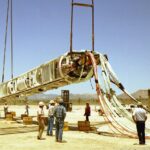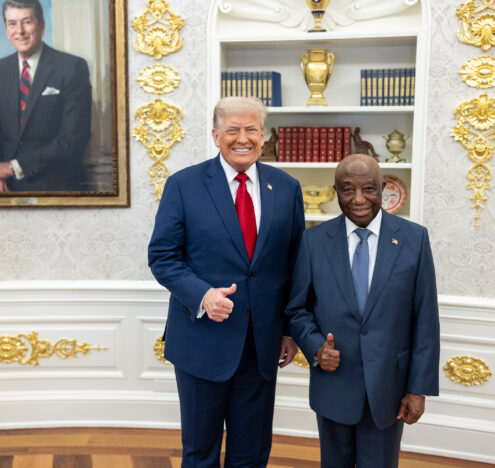Even as the COVID-19 pandemic and the climate crisis become the defining, global, existential threats to humanity of the twenty-first century, we are also still living with one from the twentieth: nuclear weapons.
Climate change has impacts well beyond our control that we will have to deal with even if we make the changes necessary to stop it. And while policy can mitigate the spread of disease or make it much, much worse, infectious disease is a part of nature. Nuclear weapons, on the other hand, are entirely human creations. The threats posed by them are due solely to the governments that harbor them, and it is entirely the responsibility of those governments to eliminate them.
As the government that brought the weapons into the world, the only one to use them in war, and one that possesses one of the largest arsenals, the United States has a responsibility to take the lead on disarmament. Instead, it is doing the opposite.
The latest step in the wrong direction comes with Congress’ passage of the National Defense Authorization Act this month. The legislation provides $2.6 billion for a new intercontinental ballistic missile system meant to replace the aging current network of missile silos across the west. That is an increase in funding for the program by more than $1 billion over what was allocated last year. The system, once complete, is supposed to remain in place until 2075 — an affront to the international agreement to move toward complete disarmament that the US joined in 1968.
The authorization also includes several programs related to the nuclear stockpile that either maintain or increase funding. The US is investing in its existing arsenal and creating whole new weapons systems to lock the nightmare of potential nuclear warfare into the futures of generations to come.
These efforts can be easy to miss amid the various disturbing headlines unfolding in US foreign policy this year. There was the disastrously executed withdrawal from Afghanistan, in which it quickly became evident that there was no evacuation plan for the many Afghans who sought to flee. There is the arming of US allies like Saudi Arabia, the United Arab Emirates and Israel, which are abusing human rights and creating humanitarian crises in Yemen and Palestine, respectively. A years-long US-NATO strategy of arming Europe against Russia has now entered a new, tense phase as Moscow sends troops to the Ukrainian border. And there is Washington’s bipartisan hostility toward China, which forges a daily path toward a future armed confrontation where there can be no victor.
The US is investing in its existing arsenal and creating whole new weapons systems to lock the nightmare of potential nuclear warfare into the futures of generations to come.
Thirty years after the end of the Cold War, American militarism is expanding without limits, and nuclear policy is part of that expansion.
It has become commonplace for officials and commentators to use the phrase “new Cold War” as a neutral descriptor of geopolitics today. Absent is an assessment of the first Cold War as a catastrophe, through which a staggering level of investment in weapons was justified. This was a context in which superpowers fought by proxy and entangled nations throughout Asia, Latin America, and Africa, costing the lives of millions of people.
It is in this unquestioned militaristic environment that the US is renewing — rather than dismantling — its nuclear arsenal.
Many hoped that President Biden would pursue a less hawkish path than his predecessors. Biden’s steps in office so far, however, point to the president continuing that same path.
The Trump administration raised funding for nuclear programs — including developing and expanding new weapons systems — by $140 billion over the next decade. Biden’s first budget request this year maintains this Trump era increase.
This comes as the US is in tense negotiations with Iran in Vienna over re-establishing the Iran Nuclear Deal — which the US wrecked when it withdrew from the agreement under Trump. Now, as Iran — which has no nuclear weapons — takes a more assertive posture and the US hints at more devastating sanctions to pressure a return to compliance, Washington is not credible in demanding non-proliferation. The US continues, after all, to arm itself.
The White House’s and Congress’ commitments to the nuclear program make dissenting views all the more important — such as a recent statement by 700 scientists, including Nobel physicists, calling on Biden to reduce the US’ stockpile as part of the administration’s forthcoming Nuclear Posture Review.
The US’ nuclear arsenal is in a phase of transition — between the expiration of 20th century weapons and systems and the development of new ones. The good news is that it is possible to simply halt the development of more systems and eliminate existing ones. But that will require a powerful mobilization to demand that Washington stop and disarm.
Khury Petersen-Smith is the Michael Ratner Middle East Fellow at the Institute for Policy Studies.




















